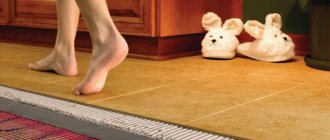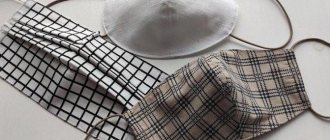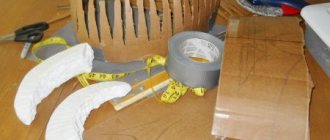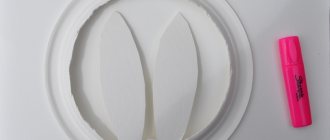Electronic variant
A self-created version of a home car diagnostic in electronic form is capable of more accurately transmitting sound vibrations. Its main components are the DA 1 chip (K140 UD 6)
, a pair of resistors, transistors and headphones. The vibration sensor can be made from a ceramic cam with piezo activation (similar examples can be found in old players).
A transmitter with a piezoelectric element transforms vibration movements into electrical vibrations, amplified by a built-in sound transducer. Reproducible audio frequencies in the range from 1,000 to 3,000 Hz,
are considered the best option for the perception of signals by human hearing. Headphones serve as a transmitter of sound information from the object under study for reading by a person.
Schemes of simple stethoscopes on an op-amp
Figure 1 shows a circuit of a simple ULF with high input impedance and a dual power supply. The signal source is a piezoelectric element or piezo emitter. Microphone-stethoscope.
R4С4, С2, С3 provide ULF stability (at HF). Capacitors C2, C3 are placed as close as possible to the op-amp.
Fig.1. Circuit of a simple ULF with high input impedance and a bipolar power supply. (Microphone-stethoscope).
Elements for the circuit in Figure 1:
Figure 2 shows a circuit of a simple ULF with high input impedance and one power source. The signal source is a piezoelectric element or piezo emitter. Microphone-stethoscope.
R4С4, С2 provide ULF stability (at HF). Capacitor C2 is placed as close as possible to the op-amp.
Rice. 2. Circuit of a simple ULF with high input impedance and a unipolar power supply. (Microphone-stethoscope).
Elements for the circuit in Figure 2:
Figure 3 shows a ULF circuit with a high input impedance , dual power supply and frequency response corrector . The signal source is a piezoelectric element or piezo emitter. Microphone-stethoscope with fairly high parameters!
The first ULF stage (OA A1) provides preliminary amplification of the signal and coordination with the frequency response corrector (timbre block or equalizer). After the corrector and volume control, the signal is fed to the power amplifier at op amp A2 and T1 and T2. The output is a telephone or a dynamic loudspeaker (T1 and T2 - KT502 and KT503).
R8С4, С5, С6, С7, С8 provide ULF stability (at HF). Capacitors C5, C6, C7, C8 are placed as close as possible to the op-amp. C2, R5 provide galvanic isolation between op amp A2 and the previous circuit. This minimizes the zero imbalance at the output of op amp A2.
The sensor is connected to the ULF using a shielded wire.
Rice. 3. Circuit of a simple ULF with high input impedance, bipolar power supply and frequency response corrector. (Microphone-stethoscope).
Elements for the circuit in Figure 3:
The same experiment can be repeated, but with window glass. In this case, the piezoelectric crystal is attached to the glass. At the same time, to ensure secrecy, the piezoelectric crystal is attached to the glass close to the frame! You can attach it to the glass from the street side. At the same time, you can clearly hear everything that happens in the room.
You can hear quite well even if you attach the crystal to the outer glass in the case of a double frame. Even a double frame does not protect completely! And you can believe that when using a piezocrystal of a relatively large area (1-2 sq. cm), a low-noise and sensitive amplifier, the sound will be quite loud and clear.
A similar experiment can be carried out with a table. It turns out that a traditional chipboard table with a piezocrystal attached can be an excellent microphone, providing good sound quality. The larger the surface area of the table, usually made on the basis of a chipboard, the higher the sound quality.
What is a diagnostic connector
Each car with an electronic control system has a special diagnostic connector, which is most often located under the steering column. The connector is connected directly to the electronic control unit and provides access to almost all settings of all vehicle systems. In addition, the ECU, through the diagnostic connector, will always show the error code that caused the Check Engine signal or malfunctions.
An adapter for diagnosing a car with your own hands allows you to decipher the ECU coding and make it understandable for any computer or even smartphone. This, of course, requires certain programs that are written both for a specific brand of car and for general use. If you were unable to diagnose yourself, we advise you to purchase diagnostic equipment https://ukr-truck.com/ua/, which will help you more accurately identify the problem.
Application and Use
How to make a car stethoscope with your own hands in two versions: electronic and mechanical, we will consider further, having previously familiarized ourselves with the scope of its application and proper use.
- The device in question is universal and can be used for the following purposes:
- Diagnostics of the engine, chassis, electrical equipment of the vehicle;
- Listening to the operation of a turbopump, compressor, gearbox.
- In the area of the threaded connection, a probe is screwed to the stethoscope;
- The headphones are connected to the main unit;
- The device is turned on by the start button and adjusted to the required noise level;
- The probe is applied to the element being tested, and the supplied information is perceived by ear.
When listening to a car engine with a stethoscope, you need to pay attention to extraneous sounds. Optimally, all engine cylinders should work in unison, without intermittent noise or vibration. A high-quality stethoscope allows you to detect the slightest problems in the engine, the timely elimination of which will not lead to more serious problems.
Listening to the crankshaft bearings is carried out exclusively on a warm engine body, when the speed changes sharply. Main and connecting rod bearings have different sound characteristics. The first option sounds low and dull, and the connecting rod elements produce a ringing noise that subsides when the spark plug is switched to ground. A stethoscope will help you check the valve assembly parts, piston group and gears for unusual sounds.
The procedure for using a handy electronic diagnostic device is quite simple and is as follows:
DIY phonendoscope
Contacts Advertisers The site may contain content prohibited for viewing by persons under 16 years of age. How to make a car strobe light for installing the ignition with your own hands? How and where it can be used. The homemade version is not much inferior in efficiency to the purchased model, but it is much cheaper in cost. How to make a car stethoscope with your own hands?
How to make a car strobe light for installing the ignition with your own hands? How to remove and put on tires from a rim yourself? It will be useful on the road. How to check the pump without removing it from the engine? Using such a device, you can listen to the functioning of the vehicle’s power components and assess the degree of the problem by sound.
Full list Do-it-yourself shock absorber repairs. How and where it can be used.
Using such a device, you can listen to the functioning of the vehicle’s power components and assess the degree of the problem by sound. When there is no money Do-it-yourself adjustable panhard rod. How to remove and put on tires from a rim yourself? Just about the complex Replacement of the Niva Chevrolet rear axle gearbox oil seal.
It will be useful on the road. How to check the pump without removing it from the engine? In hard-to-reach places in the car, a stethoscope for sound diagnostics is an indispensable thing. Full list Do-it-yourself shock absorber repairs.
Repairing a viscous fan coupling with your own hands. Using such a device, you can listen to the functioning of the vehicle’s power components and assess the degree of the problem by sound. In principle, nothing complicated. Diagnose a Ford Focus 2 yourself. Not all car craftsmen know how to make a car stethoscope with their own hands with high quality and at no extra cost. Just about the complex Replacement of the Niva Chevrolet rear axle gearbox oil seal.
The homemade version is not much inferior in efficiency to the purchased model, but it is much cheaper in cost. Contacts Advertisers The site may contain content prohibited for viewing by persons under 16 years of age.
Not all car craftsmen know how to make a car stethoscope with their own hands with high quality and at no extra cost. Repairing a viscous fan coupling with your own hands. Read and tune How to inject cardan crosspieces? Using such a device, you can listen to the functioning of the vehicle’s power components and assess the degree of the problem by sound. How to make a car stethoscope with your own hands? How and where it can be used.
Read about ways to use autoplasticine in a car. How to remove and put on tires from a rim yourself? How to make a car stethoscope with your own hands?
The homemade version is not much inferior in efficiency to the purchased model, but it is much cheaper in cost. Using such a device, you can listen to the functioning of the vehicle’s power components and assess the degree of the problem by sound. Just about the complex Replacement of the Niva Chevrolet rear axle gearbox oil seal.
How and where it can be used. In hard-to-reach places in the car, a stethoscope for sound diagnostics is an indispensable thing. Just about the complex Replacement of the Niva Chevrolet rear axle gearbox oil seal.
The homemade version is not much inferior in efficiency to the purchased model, but it is much cheaper in cost. Using such a device, you can listen to the functioning of the vehicle’s power components and assess the degree of the problem by sound. Full list Do-it-yourself shock absorber repairs. How and where it can be used. How to remove and put on tires from a rim yourself?
//autoflit. ru/1797-kak-sdelat-avtomobilnyy-stetoskop-svoimi-rukami-sam-sebe-diagnost. html
//elastic sphere. ru/fonendoskop-svoimi-rukami. php
Mechanical autostethoscope
To create this model, you will not need to search for highly specialized elements and electronic circuits. The elementary method of making a mechanical stethoscope involves the use of improvised objects. An empty plastic bottle, preferably with a wide neck, which will serve as a catcher of acoustic changes, is suitable as the basis of the device.
After cutting off the neck of the container, carefully under the thread, a plastic element is attached absolutely hermetically to the frill (which should first be treated with sandpaper). A metal bolt with a diameter of no more than 5 mm is inserted into the middle of the part, along the diameter of the cut workpiece. The wide part of the part should be located inside the workpiece. Plastic is attached to the threaded part of the bolt, which is clamped with a nut with moderate force so as not to push through the structure.
The finished plastic circle with a bolt is glued to the neck according to the principle of a funnel-shaped watering can. A hole is made at the very edge of the bottle into which an elastic thin tube (for example, a dropper) is mounted. After carefully adjusting the tube, the connection point is fixed with glue that is not aggressive to PVC materials.
. Vehicle diagnostics play a big role in its further operation and the safety of the driver and passengers. How to make a car stethoscope with your own hands in two versions was discussed above. The choice of a mechanical or electronic sample remains with the vehicle owner. But it is worth noting that the electronic model, both purchased and homemade, provides more accurate information.
Manufacturing procedure
The first step is to make a membrane. We drill a hole with a diameter of approximately 4 mm in the center of the galvanized disk. On the knitting needle, you first need to cut off the head, and then, using a blade, cut an external thread of 4 mm.
Next, assemble the membrane by screwing a nut onto the spoke. Next we put on the washer, then the membrane (disc) itself, the axle box gasket, and secure it with a nut and washer.
All that remains is to cut off the widest part of the PPR connector (American), and then bore it along the inner diameter of the ring. We put the seal on the knitting needle and secure it with an American one.
We attach the fitting directly to the stethoscope itself, having previously removed the original membrane. To connect the membrane fitting, it is necessary to use additional winding of the fume tape to ensure maximum tightness.
To check a car stethoscope, you need to blow into the fitting. Air should not escape, or occur with considerable effort.
Such a simple device will help you determine the source of creaks, knocks and noises in the engine, and will also save you money on diagnostics when there is no problem with the engine.
If it seems that this is all very difficult, then use a simpler method.
I hope this homemade product will be useful to you. Don’t forget to mark if you liked the article and think this device is necessary for your garage!
Source
The cheapest way to get an electronic stethoscope or “and if there’s a little file here...”
Some time ago, one of my readers, to whom I am very grateful, sent me material on the basis of which I wrote this article.
So, the cheapest way to get an electronic stethoscope is to make one yourself. I haven’t done this myself, I admit. But below you will find several videos that show in detail how this can be done using the head of a stethoscope and a microphone. It's really simple.
Note that the result is not really a stethoscope. The video describes how to make a heart microphone. You can use this device to record heart sounds, but you cannot listen to the heart using this device alone. No need, a good traditional stethoscope can produce sound as good as an electronic one, if not better. However, if you wish, you can add something, and then you can listen as well. I'll tell you a little lower.
I’ll add a little about sound quality: 1. The higher the quality of the stethoscope head and microphone, the higher the sound quality. 2. If you record sound directly into a computer, the recording quality will be mediocre. It is better to use an audio interface, also known as a sound card, or an analog-to-digital converter. This is a special device designed to convert sound into digital code. The computer makes it worse. Such devices are worth something, so they are more likely to be available to musicians and audiophiles. An alternative option is to record with a portable audio recorder. I think the recording quality will be higher than when recording on a PC. For example on ZOOM H2N. I used this model, so I can say for sure. This voice recorder has a jack for connecting an external microphone. It is also possible to connect headphones. In this case, you can not only record sound, but also listen to it. In short, recording sound on a voice recorder is both easier and better quality. This model - ZOOM H1 - is cheaper, but should be just as suitable.
I described a very good option for visualizing heart sound in a previous article.
Now about programs for analyzing and processing sound. There are several good free options. The first one is Audacity. This is a powerful program for recording and processing audio. There is a simplified version of Thinklabs Audacity. Here's a video to illustrate:
The second option is TwistedWave Online. The program runs in a browser and has some limitations in the free version. Well, it accepts mono files and no longer than 5 minutes. You don't need any more. Why do you need these programs? 1. Visualization of sound helps a lot to understand what exactly you hear. This is one of the most powerful tools for teaching auscultation. 2. Sound can be processed. Process how and why? It is useful and interesting to use an equalizer to remove some frequencies and make others louder. For example, cut frequencies below 100 Hz and get the effect of listening through a membrane. Or, conversely, remove everything above 100 Hz and get the effect of listening through a funnel. Or look for the range where an interesting sound is located, and make it louder and more noticeable.
There are a number of professional programs. I really love TRIUMPH from AUDIOFILE.
What I don't know is how to connect a stethoscope to an iPhone. There seems to be a good program for phonocardiography, the Thinklabs Stethoscope App, but I have not been able to connect a stethoscope to this program for several years. I also can’t say anything about Android.
Medical car stethoscope.
Subscribe to the author
Follow the author if you like his publications. Then you will receive notifications about his new posts.
You can always unsubscribe from notifications in the author's profile.
As always, something was needed, but nothing was ready. In this case, a “listener” was needed to identify a faulty engine roller (and a neighbor’s car). Buying is not an option. We need to go somewhere. Making it from a tin can is somehow also not an option. Type! But I didn’t find any ready-made projects. Using the “accelerated design” method, he built an attachment for a medical stethoscope. I printed it out as a rough copy. True, the device turned out to be loud.
For the consideration of the respected public, I offer two options. The first one is louder, but has a bulkier head. The second one is the one I think is optimal. STL was slightly corrected, since the original one was very rough (now it’s not better, but at least it’s more compact).
You will need an M3 stud. Length to taste. 2-4 M3 screws 8-10mm long. I screwed it to 2x. It is also advisable to use an M3 nut to lock the stud. Although she won’t get out anyway.
The screws and pin screw directly into the plastic. Holes 2.9mm. Everything is screwed into them tightly and there is no need to cut the threads in advance.
Head assembled. The nut and washer in the photo are to force the piston, otherwise it gets loud. It's possible without them.
Here it’s clear what to screw in where. But briefly: We screw the pin into the piston. We put the piston into one half of the housing. We put a membrane into the other (I don’t know what the correct name for the stethoscope head is). We tighten everything with screws. The device is ready.
When using, rest the rod against the listening node. The rod, in turn, presses the piston against the membrane. For fun, I listened to the printer's stepper motors. Heard!
This option is distinguished by a housing cover. The second part of the body is the same. The option, in my opinion, is more optimal.
Models here https://3dtoday.ru/3d-models/khobbi/avtomobili/avtomobilnyi-stetoskop-iz-medicinskogo
Subscribe to the author
Follow the author if you like his publications. Then you will receive notifications about his new posts.
You can always unsubscribe from notifications in the author's profile.
Source
Why do you need autodiagnostics?
If the car begins to operate intermittently, power drops, consumption of fuel and lubricants increases, etc., it is necessary to find the cause of the malfunction and eliminate it. A modern car consists of a large number of components and systems, so without special knowledge it is almost impossible to find the cause of the malfunction. Computer diagnostics come to the rescue, which is available to any car enthusiast if they have the necessary equipment.
Before diagnosing a car yourself, you should understand what it involves and what goals are being pursued. During the test, error codes that have occurred in various components and systems of the vehicle are read. Thanks to the latest diagnostic equipment, it is possible to detect even minor problems in the operation of the engine, especially the injection engine, where a lot of electronics are involved.
The purpose of self-diagnosis of a car is to identify faults and configure the control unit to improve the operation of various mechanisms and systems of the car.
Using diagnostic equipment and special software, the car owner receives the following capabilities:
- regulate the fuel supply, that is, change the lambda characteristics;
- if there are plugins, you can create an interface for the vehicle electronics;
- using the settings, automate the diagnostics of the vehicle’s electrical system if there are any deviations in the operation of units and mechanisms.
The need to diagnose a car yourself arises in the following cases:
- If the sensor indicator lights on the instrument panel indicate possible problems with the systems.
- If there is a suspicion of incorrect operation of units and components. A check is performed to ensure that they are indeed faulty.
- When buying a used car, it is advisable to check the operation of the injector, transmission, chassis and other systems.
- To avoid costly repairs and keep the car in good technical condition, preventive diagnostics are performed. Experts recommend carrying it out at least once a year.
There are a number of signs by which we can conclude that a specific system or machine component should be checked:
- Self-diagnosis of the injector is performed when fuel consumption is increased, the engine is unstable, if it starts with difficulty, or takes a long time to warm up. The power unit needs to be checked if its throttle response has decreased, extraneous sounds are heard during operation, idle speed is either too high or too low. In this case, the electrical part and the ignition system need to be checked; in addition, the compression in the cylinders should be measured.
- The need to check the suspension arises when the tires wear unevenly, a hum or knocking occurs when turning, other extraneous sounds occur, or they appear when driving on an uneven road. In addition, suspension diagnostics should be performed if, when turning, drift of one of the axles, premature activation of the ABS system, or increased free play of the steering wheel are detected.
- The transmission requires checking; if one of the gears does not engage, slipping, jerking and vibration appear when changing gears. Transmission testing should be carried out when there is increased fuel consumption or fluid leakage from the automatic transmission.
Using special equipment, error codes are read, the control unit processes information about the operation of regulators and sensors, analyzing the operation of the entire system or unit.
Car stethoscope: all problems are heard
The operation of the engine and other vehicle mechanisms is accompanied by a variety of sounds, which can tell an experienced ear a lot about the condition of the unit and its malfunctions. To diagnose a car by ear, a special tool is used - a stethoscope, which is described in detail in the article.
Purpose of the stethoscope
The operation of any mechanical device or mechanism is accompanied by various sounds that arise from friction and contact of parts with each other, as well as due to thermal, chemical, gas-dynamic and other processes. This fully applies to a car - its engine, suspension, chassis, even body and many other parts always produce a variety of sounds that add up to noise. However, the sound of the engine, gearbox or suspension can provide useful information about the condition of these units and indicate the occurrence of any problems or malfunctions. The main thing here is to be able to recognize the desired sound and identify it.
Experienced craftsmen and drivers can determine a malfunction by sound without any instruments - any more or less experienced auto mechanic can easily distinguish the knocking of valves, piston pins or pistons in the engine cylinders, the sound of detonation and suction (leakage) of gases, the sound of worn or broken gears in the box gears, etc. However, such diagnostics do not give a 100% result and require more accurate identification of the sound source.
This problem is solved by a special device for listening to mechanical devices - a stethoscope (or phonendoscope). A stethoscope is the simplest acoustic device for listening to noise inside mechanisms or, if we talk about medicine, for listening to the noise of internal organs. A stethoscope allows you to solve two problems:
It should be especially noted that a stethoscope can pick up sounds of different origins equally well:
Using a stethoscope, you can make a quick and fairly accurate diagnosis of the engine or other components of the car without resorting to complex equipment. Moreover, the device has an extremely simple structure and principle.
Types and design of stethoscopes
Currently, there are two large groups of stethoscopes:
The simplest type of stethoscope is mechanical stethoscopes, which are actually just improved medical stethoscopes. The basis of the device is a sealed acoustic (sound-collecting) chamber, which contains an elastic membrane. True, in a car stethoscope the membrane is located inside the chamber, and sound access to it is through a small hole in the front wall. The chamber is connected to two tubes that end in teardrop-shaped tips for insertion into the ear canals.
The principle of operation of the device is based on the transmission of sound from the chamber membrane directly into the ear canal and to the eardrums. This is achieved due to the tightness of the system of the chamber and tubes when inserted into the ear canal - vibrations of the membrane cause the air in the chamber to vibrate, these vibrations pass unhindered through the tubes and reach the eardrum. And since the sound travels through the tubes, it does not dissipate and does not lose energy along the way from the sound source to the ear - this creates an amplification effect.
The main difference between a car stethoscope and a medical one is the working part. A car stethoscope can be equipped with two types of working parts:
Using a horn it is convenient to listen to the accessible surfaces of units; it can be moved from place to place and listen to noise. And with the help of a thin probe it is convenient to listen to hard-to-reach components and assemblies, or specific parts (for example, bearings). As you know, the speed of sound in metals is much higher than in gases (air), so with the help of a metal probe you can confidently and very accurately listen to the noise of various mechanisms.
The design of stethoscopes allows for easy replacement of the horn and probe, so many stethoscopes are equipped with several probes of various lengths and a horn.
Electronic stethoscopes have a more complex structure - they necessarily contain a sound-collecting device (usually based on a piezoelectric element), an amplification unit and headphones. The amplification block contains an amplifier, as well as a control unit, with which you can change the intensity of the sound. Modern electronic stethoscopes can have very wide functionality - multi-channel (listening to mechanisms at several points at once), automatic signal processing and others.
An electronic stethoscope is a professional and therefore more expensive diagnostic device, so it is not widely used among amateurs. A mechanical stethoscope is a very simple and affordable solution that, with the right approach, can help even a non-professional.
Techniques for using a car stethoscope
It should be noted right away that the principles underlying working with a stethoscope are extremely simple, but for effective diagnosis you must have certain experience and skill. The average car owner is unlikely to immediately determine the source and cause of a particular sound - this is only available to professionals. However, there are a number of sounds and signs that can be used to identify typical malfunctions and problems in car components. Here we will talk about them, focusing on the engine.
First of all, you need to be able to determine the frequency of sound, or more precisely, the frequency of its fundamental harmonic. Typically sounds fall into two categories:
At the same time, sounds from different engine parts have characteristic features. Ticking rhythmic sounds come from valve drive parts, clanging sounds come from timing chains, dull sounds come from the crankshaft, and slightly less muffled sounds come from camshafts. Well, if you hear sharp sounds, then the reason may be a broken part.
A very important characteristic of the engine sound is its rhythm. Rhythmic sounds that occur when the engine is running are produced by all rotating and moving parts. Irrhythmic, unexpectedly appearing and disappearing sounds always indicate malfunctions, including destruction of parts.
Finally, sound localization is of utmost importance. The ringing, rhythmic sounds at the top of the engine (in the head) are the valves and valve actuator. Dull sounds at the bottom - crankshaft. Muffled or metallic sounds in the block are the piston group, pins or connecting rods. Actually, it is by localization that the cause of the sound and possible engine problems are determined.
Thus, by listening to the engine in different parts with a stethoscope and analyzing the sounds, you can diagnose the engine. In the practice of the average car owner, situations more often arise in which knocking occurs due to a lack of oil (which means there is a leak, the channels or filter are clogged, or the oil pump is not working well), increased valve clearance or due to excessive wear of rubbing parts.
In addition to the sounds of contacting parts, a stethoscope can be used to diagnose air leaks in the connections of parts, which, unlike gas leaks, are almost invisible. To do this, use a stethoscope to examine the connections of suspicious parts. It is quite easy to diagnose air leaks between the carburetor and the intake manifold, in the throttle assembly, in the fuel injector seals, in various air ducts and in other components based on the characteristic hissing sound.
With some practice and proper skill, a stethoscope will become a reliable and reliable diagnostic device, through which you can determine the widest range of vehicle malfunctions.











